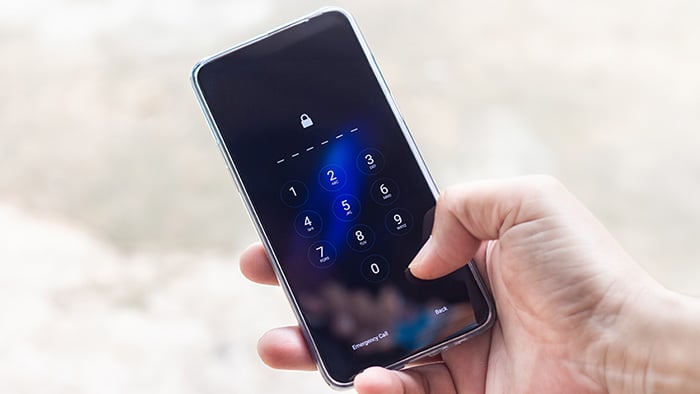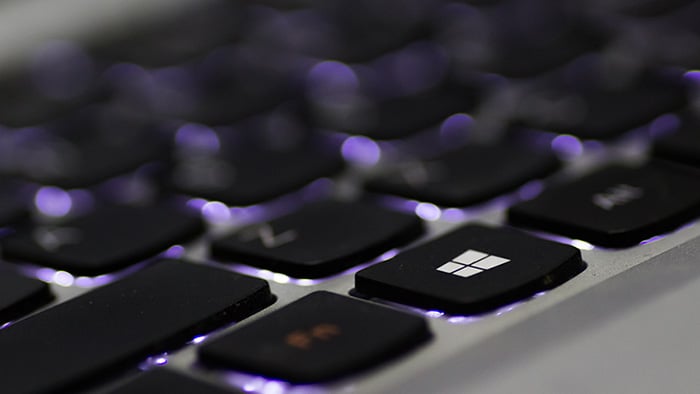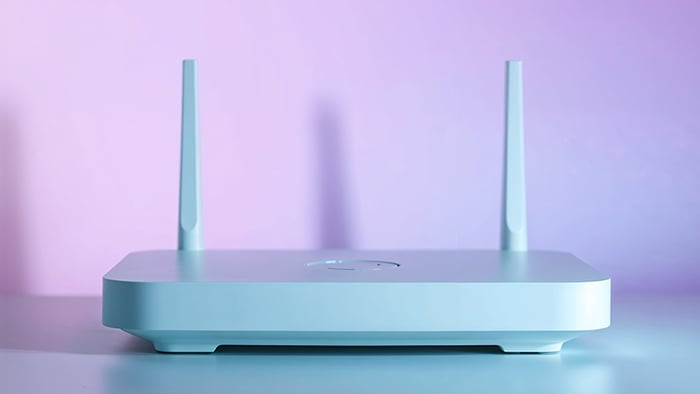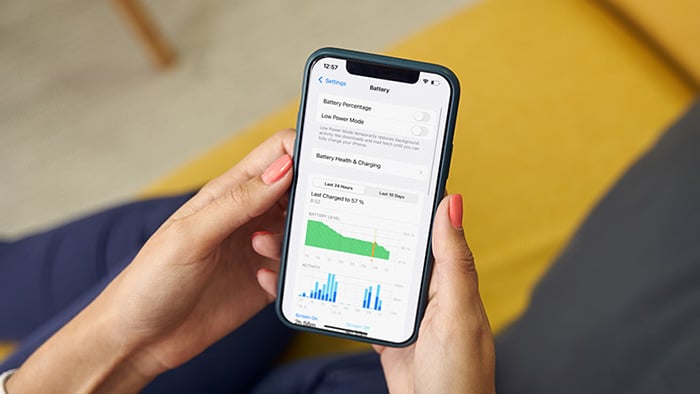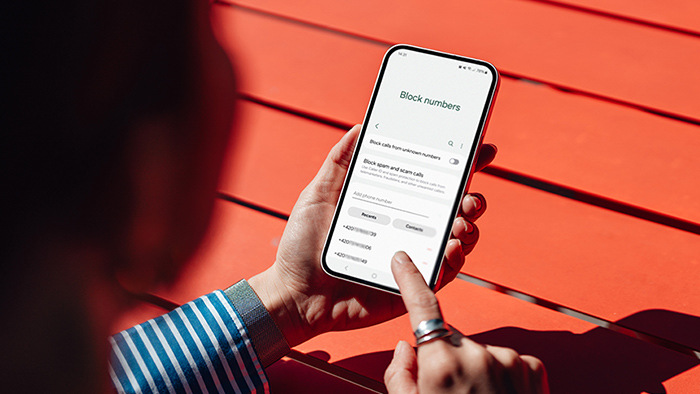What is a non-fungible token?
A non-fungible token (NFT) is a digital asset with markers that make it unique and, through the use of blockchain technology, ownable by only one person at a time. NFTs can be artwork, collectibles, virtual real estate, or any media file that can be assigned a unique digital identifier and placed on a blockchain.
Human beings naturally find rare objects valuable, and NFTs guarantee authenticity and ownership, making them rare, useful as status symbols, and convertible to cash via cryptocurrency. After NFTs are put on a blockchain, which acts as a digital ledger, they can't be copied.
 An NFT carries a unique digital certificate to prove ownership.
An NFT carries a unique digital certificate to prove ownership.
You can make your own NFT out of any digital format, such as audio, video, or GIF. Most people creating NFT art start with digital 2D artwork. Learning how to make NFTs is not only fun but could be lucrative if your NFT catches the eye of collectors.
How do you create an NFT?
So, how do I create an NFT? To create an NFT and sell it online, you first need a suitable digital media file and a crypto wallet linked to a compatible blockchain. Then you can pick a suitable marketplace, upload your file to “mint” your NFT, and list it for sale.
Here’s a step-by-step for how to make NFTs:
1. Choose your digital medium
You can turn any image or media file that you own the intellectual property rights to into an NFT — for example, a photo, piece of music, or painting. If you’re going to make one from scratch, you can use NFT-specific programs like Bueno or NFT-inator, or any image creation program like Photoshop or Procreate. There’s no special process for how to create an NFT, it just has to be original.
Popular NFTs are 2D images, 3D images, GIFs, audio, and video. Creating NFTs with static 2D images is easier for NFT beginners. For advanced users, you can create 3D NFTs with programs like Maya, Bender, or Houdini. If you know how to program well, you can even create virtual real estate on a piece of digital land in the Metaverse.
Here are some popular types of 2D NFTs:
-
Individual art: Making unique individual NFT pieces can teach you how to start an NFT project that is larger or more intricate.
-
NFT collections: NFT collections have a shared theme to form a collection that could even include thousands of variations of the original.
-
Memes: Many NFT memes have sold for high amounts. Though unlikely, if you’re creative and lucky enough to have one go viral, you could be in for a windfall.
-
Trading cards and collectibles: NFTs that capture a unique real-life moment or a beloved character can become desirable.
 NFT examples on the OpenSea marketplace.
NFT examples on the OpenSea marketplace.
2. Choose your blockchain
NFTs are stored on a blockchain through a process called minting where the digital certificate is created — once minted, an NFT can’t be altered. When choosing a blockchain, keep in mind compatibility with crypto wallets and marketplaces, security, and gas fees.
Gas fees are what a blockchain charges you to perform transactions on it, and these are usually the most noticeable and consequential difference for the NFT beginner.
Different blockchains validate transactions in different ways (Proof-of-Work, Proof-of-History, and Proof-of-Stake), which affect gas fees, processing speeds, security, and even the environment differently — minting NFTs is energy intensive.
Ethereum
Ethereum is the most commonly used blockchain for NFT art, and is compatible with every major NFT marketplace. Ethereum uses Proof-of-Stake to confirm transactions, which is the most secure. The main drawback of Ethereum is the high gas fees for each transaction.
Solana
Solana uses Proof-of-History and Proof-of-Work to validate transactions, which are less secure than Proof-of-Stake but can process transactions faster. Solana is compatible with most marketplaces and gas fees are lower than Ethereum’s.
Flow
Flow operates via the Proof-of-Stake model and supports everything Web3 has to offer, including NFTs. Flow is more user-friendly and cheaper to use than Ethereum. Blockchain validation needs computing power to do its work, which consumes energy. Flow has a more eco-friendly, efficient workload distribution.
3. Create your crypto wallet
Transactions on NFT marketplaces are done through crypto wallets, which encrypt your NFTs until you’re ready to sell or trade. Without a crypto wallet, you can’t create your own NFTs.
These are some of the best crypto wallets for NFTs:
-
MetaMask is one of the most widely used and trusted crypto wallets for NFTs and is integrated into most NFT marketplaces. MetaMask also has a browser extension.
-
Rainbow is a mobile-first crypto wallet supported by most NFT marketplaces. Rainbow is open-source, making it a favorite of many NFT enthusiasts.
-
Coinbase has a user-friendly interface and supports two-factor authentication. It also has a browser extension and can be linked to many US bank accounts. Your bank is one of the best places to buy crypto safely.
-
Trust Wallet supports a huge amount of digital assets and has a built-in Web3 browser. It also has an intuitive and mobile-friendly interface.
4. Choose your marketplace
After creating a crypto wallet, you have to choose a marketplace to link it to.
These are some of the best marketplaces for NFTs:
-
OpenSea is the biggest NFT marketplace. You can also mint NFTs on OpenSea for free in its gasless store, and OpenSea’s commission is 2.5% of the sale price.
-
SuperRare is a market focused on individual, curated, high-quality NFT art. If you’re looking to create NFT art that could belong in a museum, this is for you. SuperRare takes a 15% commission on the primary sale.
-
Rarible has a “lazy minting” option, where the buyer pays the gas fees instead of the seller.
5. Create your NFT
After deciding on the essentials, you’re ready to create your NFT on a marketplace. Here’s how:
Connect your crypto wallet
Connect your crypto wallet to a marketplace. You’ll need to sign in and take various steps to authorize it.
 Connecting a crypto wallet on OpenSea.
Connecting a crypto wallet on OpenSea.
Develop your NFT using a generator
Skip this step if you already have your digital file.
This process is how to create NFT art using a no-code NFT art generator. These sites are great if you want to know how to make NFTs but don’t have a lot of experience with creating art or coding. For example, NFT-inator lets you create NFT art for free or pay to unlock more features. Bueno is another established no-code NFT art generator that can help you learn how to create NFTs.
Select your media file and input required information
Upload the media file to the marketplace and input the required attributes like name, description, image size, metadata, etc. These attributes will differ depending on the marketplace you use. Select the blockchain where you want your NFT to be stored and click “create.”
6. Sell your NFT
After creating your NFT, you’re ready to sell. Enter your price and hit “sell.” Depending on the blockchain your NFT is on, there could be a small transaction fee to sign your crypto wallet to conclude this step.
Do I lose rights to my art if I sell it as an NFT?
When you sell an NFT, you typically transfer over the rights of ownership, but keep your intellectual property rights. When you make NFT art, it gains a unique certificate of authenticity that can be held by only one person at a time. You can always create a new piece with the same style.
Most NFT marketplaces let you choose whether to transfer the copyright upon sale. Copyright laws vary by country as far as what ideas are copyrightable.
Do artists get paid every time an NFT sells?
Most marketplaces offer royalty fees, which reward the NFT creator if their NFT is resold. The percentage of the royalty changes depending on the marketplace. Royalties can be from 5% to as high as 50%.
Popular examples of NFTs
CryptoPunks kicked off the NFT collection craze, and Bored Apes followed soon after. NBA Top Shot is an officially licensed NFT trading card line with embedded video of a player’s best moments. The Disaster Girl meme sold for half a million, which is peanuts compared to the one million-plus haul for Quantum, the world’s first NFT art.
 CryptoPunks NFTs are available on the OpenSea marketplace.
CryptoPunks NFTs are available on the OpenSea marketplace.
How do NFTs work?
Minting NFTs works by creating a smart contract that’s stored on a blockchain and that assigns ownership to the creator. Anyone can create an NFT. And like physical artwork, NFTs can be bought and sold. When the NFT is sold, ownership is transferred to the buyer.
When working with NFTs, you’ll be swimming deep in cryptocurrency markets along with the crypto sharks. Be careful, because crypto shams and other online scams may abound. And don’t fall for NFT hype — many of these NFT crypto assets are worthless. Make sure you protect your devices and online data with solid security software.
Protect your online data with Avast
Avast Free Antivirus helps block incoming threats like malware and stop your device from being made part of a botnet. It will also alert you if any of your email passwords have been hacked so you can re-secure your account quickly. Download Avast today and benefit from more than 30 years of experience and the industry’s largest threat-detection network.
FAQs
Can a beginner create an NFT?
Anyone can make an NFT with the help of websites like NFT-inator and Bueno that walk you through the process. Even if you want to design your own NFT from scratch, listing it on a well-established marketplace can help it get noticed.
Can you generate an NFT for free?
Yes, you can generate an NFT for free. For example, NFT-inator allows you to generate NFTs for free. However, minting typically costs a small fee called “gas.” In some marketplaces, you can defer gas fees to the eventual buyer, in a process known as “lazy minting.”
How much does it cost to create an NFT?
The cost of creating an NFT varies by site and by your blockchain of choice. Ethereum typically costs more than other blockchains to mint an NFT. Certain marketplaces also charge listing fees. Creating an NFT can be free, but taking into account gas fees, marketplace listing fees, and transaction fees, costs can spike quickly.
Is it easy to sell your first NFT?
Selling your first NFT takes determination and planning. You have to create a niche NFT that a specific audience will want to buy. There are many markets out there, so you have to do some research and find the market that fits your skills.
Can any image be sold as an NFT?
Yes, any image can be sold as an NFT. An NFT becomes an NFT when a digital file is minted. Creating NFT art can be as simple as minting an interesting photograph you have taken, or existing images that no one has yet claimed. Just like real art, any image can gain value, as long as someone else values it.



 An NFT carries a unique digital certificate to prove ownership.
An NFT carries a unique digital certificate to prove ownership. NFT examples on the OpenSea marketplace.
NFT examples on the OpenSea marketplace. Connecting a crypto wallet on OpenSea.
Connecting a crypto wallet on OpenSea. CryptoPunks NFTs are available on the OpenSea marketplace.
CryptoPunks NFTs are available on the OpenSea marketplace.

